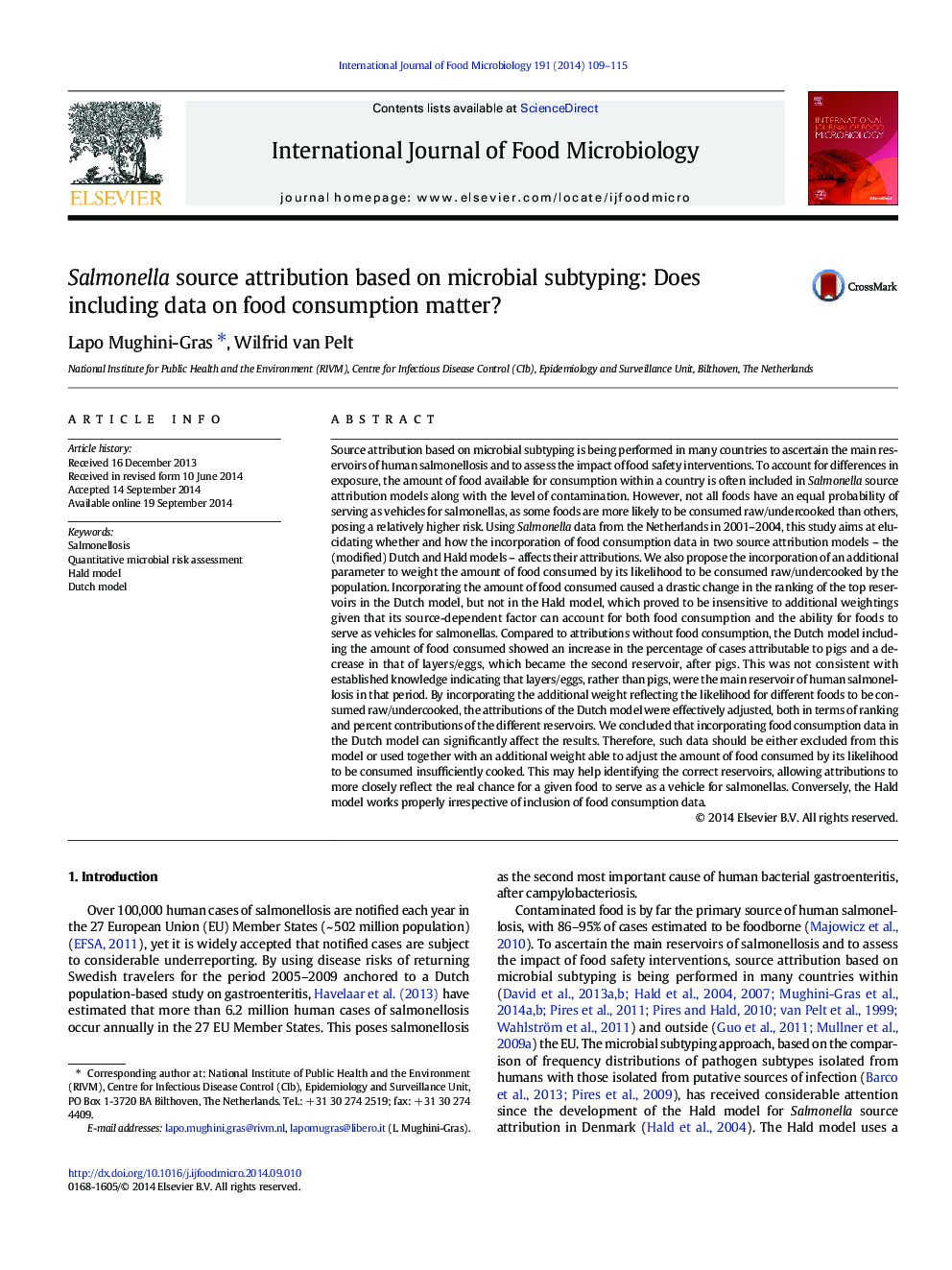| کد مقاله | کد نشریه | سال انتشار | مقاله انگلیسی | نسخه تمام متن |
|---|---|---|---|---|
| 4366728 | 1616592 | 2014 | 7 صفحه PDF | دانلود رایگان |
• We assess whether food consumption data affect Salmonella source attribution models.
• We use an additional parameter to account for consumption of raw/undercooked foods.
• Food consumption data may have a significant impact on attribution estimates.
• The additional parameter may help identify the correct primary reservoir.
• Models can better reflect differences among consumed foods to transmit salmonellas.
Source attribution based on microbial subtyping is being performed in many countries to ascertain the main reservoirs of human salmonellosis and to assess the impact of food safety interventions. To account for differences in exposure, the amount of food available for consumption within a country is often included in Salmonella source attribution models along with the level of contamination. However, not all foods have an equal probability of serving as vehicles for salmonellas, as some foods are more likely to be consumed raw/undercooked than others, posing a relatively higher risk. Using Salmonella data from the Netherlands in 2001–2004, this study aims at elucidating whether and how the incorporation of food consumption data in two source attribution models – the (modified) Dutch and Hald models – affects their attributions. We also propose the incorporation of an additional parameter to weight the amount of food consumed by its likelihood to be consumed raw/undercooked by the population. Incorporating the amount of food consumed caused a drastic change in the ranking of the top reservoirs in the Dutch model, but not in the Hald model, which proved to be insensitive to additional weightings given that its source-dependent factor can account for both food consumption and the ability for foods to serve as vehicles for salmonellas. Compared to attributions without food consumption, the Dutch model including the amount of food consumed showed an increase in the percentage of cases attributable to pigs and a decrease in that of layers/eggs, which became the second reservoir, after pigs. This was not consistent with established knowledge indicating that layers/eggs, rather than pigs, were the main reservoir of human salmonellosis in that period. By incorporating the additional weight reflecting the likelihood for different foods to be consumed raw/undercooked, the attributions of the Dutch model were effectively adjusted, both in terms of ranking and percent contributions of the different reservoirs. We concluded that incorporating food consumption data in the Dutch model can significantly affect the results. Therefore, such data should be either excluded from this model or used together with an additional weight able to adjust the amount of food consumed by its likelihood to be consumed insufficiently cooked. This may help identifying the correct reservoirs, allowing attributions to more closely reflect the real chance for a given food to serve as a vehicle for salmonellas. Conversely, the Hald model works properly irrespective of inclusion of food consumption data.
Journal: International Journal of Food Microbiology - Volume 191, 17 November 2014, Pages 109–115
